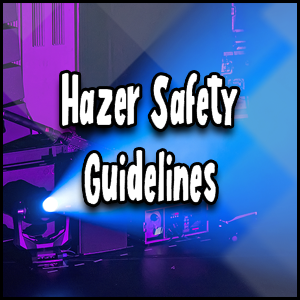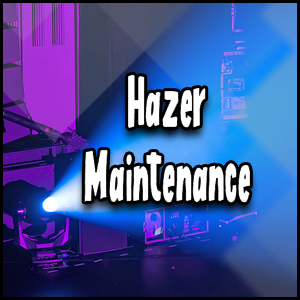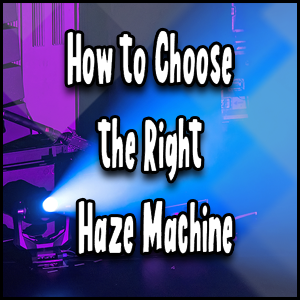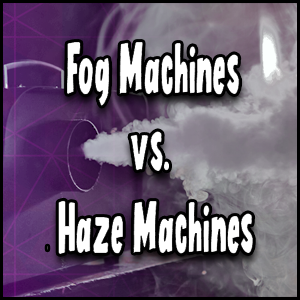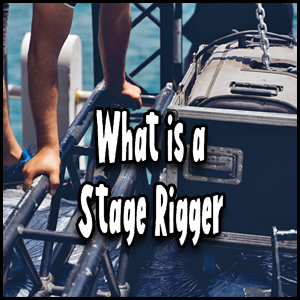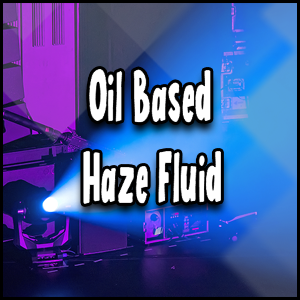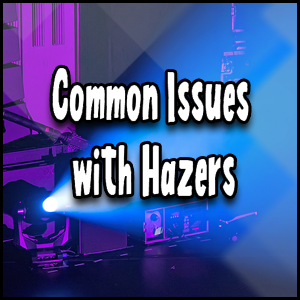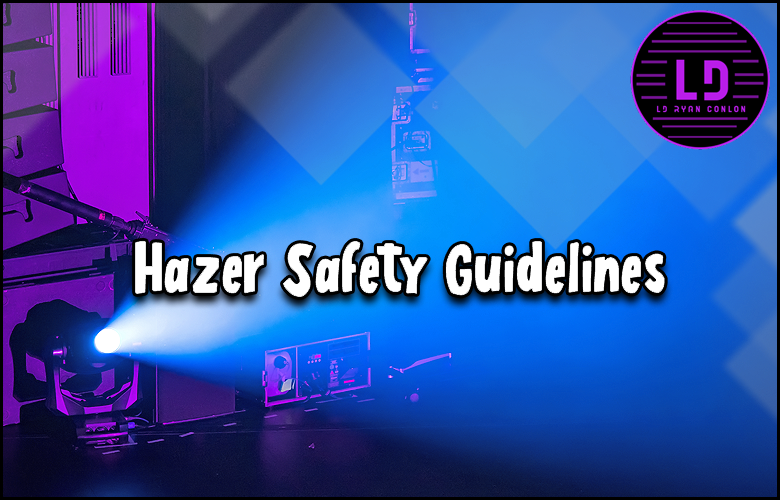
Last Updated on June 4, 2025 by LD Ryan Conlon | 🕒 5 min Read Time
Imagine you’re a puppet master, pulling strings furiously in a grand display.
The stage is your canvas, and the hazer, your paintbrush – deftly adding depth and ambience to each scene, creating an immersive experience for the captivated audience.
However, this powerful tool needs careful handling.
One wrong move could potentially lead to unforeseen accidents or even disruption of your magical performance.
From learning about its mechanics to understanding how to use it correctly; let’s unravel the misty veil around Hazer Safety guidelines because just like every puppet master’s responsibility towards their puppet, when it comes to orchestrating these spectacles, safety must always take center stage.
Our website provides comprehensive safety guidelines for the use of haze machines on stage. These guidelines include information on proper ventilation, monitoring air quality, choosing appropriate fluids, and maintaining equipment. By following these guidelines, you can ensure a safe and healthy environment for performers and staff during stage productions.
Hazer Safety Guidelines for the Crew
When it comes to operating hazer systems, the safety of the crew should always be a top priority.
Hazers are fantastic tools for creating atmospheric effects on stage, but they do come with certain risks if not handled properly.
To ensure a safe performance, it is crucial for the crew to follow specific guidelines.
Let’s dive into some important safety measures that should be implemented when working with hazers.
One essential guideline is to always wear appropriate personal protective equipment (PPE) when operating or being in close proximity to hazers.
This includes safety glasses or goggles, gloves, and respiratory protection if necessary.
Even though modern hazers are designed to produce fine particles that dissipate quickly, there can still be a risk of irritation or allergic reactions for some individuals.
Additionally, crew members should receive thorough training on how to operate the hazer system safely.
They need to understand its features, controls, and potential hazards associated with the use of haze fluids.
Education on proper set-up, maintenance, and troubleshooting is also crucial for preventing accidents and ensuring smooth performances.
Think of operating a hazer system like driving a car.
Before hitting the road, you need to familiarize yourself with all the controls and safety features of the vehicle.
You wouldn’t drive without knowing how to brake or accelerate properly. Similarly, crew members should know how to control haze output, adjust fan speed, and shut off the system in case of emergencies.
Some people may argue that wearing PPE can be uncomfortable or restrict movement while working on stage.
While this may be true to some extent, it is essential to prioritize safety over convenience. PPE not only protects crew members from possible health risks but also instills a sense of confidence knowing that they are taking necessary precautions.
Understanding the Hazer System and its Output
To ensure the safe operation of a hazer system, it is vital for the crew to have a clear understanding of how it works and what type of output it produces.
This knowledge will help them make informed decisions about placement, maintenance, and adjustment of the hazer during performances.
Hazers work by heating a haze fluid that converts into tiny particles or droplets.
These particles are then dispersed into the air with the help of a fan or blower.
The size and density of these particles contribute to the visual effect created on stage.
Understanding this process allows the crew to manipulate and control the output to achieve the desired atmospheric effect.
Additionally, crew members should be aware of any specific guidelines or limitations associated with their particular hazer system.
Different models may have different heat settings, fan speeds, or requirements for haze fluid types.
Familiarizing themselves with these specifications ensures that they can operate the hazer within its intended parameters.
Critics might argue that understanding all these technical details is unnecessary, as long as the hazer produces the desired effect on stage.
However, having a deeper comprehension of how the hazer operates not only improves the crew’s ability to troubleshoot technical issues but also enhances their overall safety awareness.
Imagine baking a cake without knowing the required oven temperature or baking time. You might end up with an undercooked or burnt cake.
Similarly, operating a hazer without understanding its specific settings could result in inefficient haze production or even equipment damage.
Knowledge is power when it comes to operating any tool effectively and safely.
- Across the theater industry, it’s been found that only about 15% of productions use real-time aerosol monitors to ensure their haze and fog effects follow safety guidelines, despite the significant benefits they offer for ensuring respiratory safety.
- According to theatrical smoke and haze regulations set forth by Equity-League, air sampling has identified limits for substances like glycol, glycerol, and mineral oil used in fog or haze effects on stage – exceeding these could lead to potential health hazards.
- In a survey conducted by Actors’ Equity Association (AEA) revealed that approximately 20% of actors and stage managers reported experiencing adverse respiratory symptoms due to exposure to theatrical smoke and haze effects.
Maintaining Appropriate Distance from Hazers
When using hazers in theatrical productions, it is crucial to understand the importance of maintaining an appropriate distance between the hazer system and the performers.
This not only ensures the safety of the actors and crew but also helps to achieve optimal effects for the audience.
Let’s imagine a scene in a play where a hazer is used to create a hazy atmosphere during a suspenseful moment.
If the hazer is placed too close to the actors, they may be engulfed in a dense fog, obstructing their visibility on stage and potentially causing accidents.
On the other hand, if the hazer is positioned too far away, the haze might not reach its intended target, resulting in a lackluster effect for the audience.
To strike the right balance, it is important to consider factors such as the size of the performance space, airflow within the venue, and specific instructions from the hazer manufacturer.
These guidelines are designed to ensure that actors and crew members are exposed to haze levels that are safe and comfortable.
Actors’ Equity Association guidelines were established for theatrical smoke and haze effects.
These charts provide recommended distances actors should be from the release point of haze products during specified wait times.
Adhering to these guidelines is essential in order to maintain appropriate distance from hazers.
Some producers and theater professionals might argue that maintaining distance can hinder certain artistic choices.
They may claim that being too cautious about proximity could limit creative possibilities.
However, it’s important to remember that safety should always be prioritized over any potential aesthetic compromise.
Think about a tightrope walker performing high above the ground: they may have moments where they want to push boundaries for dramatic effect, but if they ignore safety measures and get too close to the edge, the risk of falling becomes far greater.
Similarly, maintaining an appropriate distance from hazers is about striking a balance between creativity and safety, ensuring that both the performers and the audience can enjoy the experience without unnecessary risks.
Now that we understand the significance of maintaining appropriate distance from hazers, let’s delve into air sampling procedures and equipment to further enhance safety protocols within theater productions.
Air Sampling Procedures and Equipment
Air sampling plays a crucial role in ensuring the health and well-being of actors and crew members during theater productions involving fog, smoke, or haze effects.
It provides valuable data on air quality, helping to identify any potential issues that could arise from the use of these atmospheric cues.
Imagine a scenario where a production is utilizing a smoke effect during a pivotal scene.
Without proper air sampling, it would be impossible to monitor the concentration of smoke particles in the air.
This could lead to actors being exposed to harmful substances or excessive levels of smoke, posing health risks and compromising their performance.
To conduct air sampling effectively, portable real-time aerosol monitors can be rented or purchased.
These monitors are calibrated using the product’s calibration factor to ensure accurate readings.
The placement of the monitor is crucial as it should be positioned close to where actors and stage managers will be positioned during performances, replicating show conditions as closely as possible.
Multiple readings should be taken before, during, and after effects cues to obtain a median result.
This ensures that any fluctuations in air quality are accounted for. Data obtained from the monitor can then be downloaded and reviewed on a computer for further analysis.
While some theater professionals may argue that conducting air sampling is time-consuming and interrupts rehearsal processes, it is important to emphasize that this procedure is vital for creating a safe working environment.
Neglecting air sampling could result in the exposure of actors and crew members to potentially harmful substances, jeopardizing their health and well-being.
In cases where readings exceed the limits for certain substances, adjustments must be made, and further air sampling should be conducted.
This ensures that any necessary precautions or changes are implemented promptly to maintain a safe environment.
Think of air sampling like obtaining blood test results before undergoing surgery.
Doctors wouldn’t proceed without understanding the patient’s health condition.
Similarly, air sampling allows theater professionals to make informed decisions about the safety measures needed during performances.
Now that we have explored the importance of air sampling procedures and equipment for maintaining a safe working environment, let’s move on to discussing regulatory compliance when it comes to hazer use in theatrical productions.
- Air sampling is crucial in ensuring the health and well-being of actors and crew members during theater productions involving fog, smoke, or haze effects. It helps to monitor the concentration of harmful substances in the air and make informed decisions about safety measures. Portable real-time aerosol monitors can be used for effective air sampling, and multiple readings should be taken before, during, and after effects cues to ensure accurate results. Neglecting air sampling could jeopardize the health of individuals involved in the production. Regulatory compliance is also important when using hazer equipment in theatrical productions.
When and How to Conduct Air Sampling
Air sampling is a crucial aspect of ensuring the safety of performers and crew members when using haze effects on stage.
It helps to determine the levels of potentially harmful substances in the air, such as glycol, glycerol, and mineral oil, which can be present in some haze fluids.
By conducting air sampling at appropriate times and following established procedures, theaters can take proactive measures to protect the health and well-being of everyone involved in the production.
Let me share a story with you that highlights the importance of conducting air sampling during performances.
In a recent musical production, the crew used a new brand of haze fluid for the first time.
The fluid was advertised as safe and non-toxic, but they decided to conduct air sampling just to be sure.
To their surprise, the results showed elevated levels of glycol in the air.
Thanks to this early detection, they were able to switch to a different brand before exposing their actors and stage managers to potentially harmful substances.
To ensure accurate results and meaningful insights from air sampling, it is crucial to follow proper procedures.
Firstly, consider conducting air sampling during a work call that replicates show conditions.
This means setting up the haze machine and positioning the portable monitor close to where actors and stage managers will be located during performances.
By simulating actual performance scenarios, you can obtain more accurate readings that reflect real-world exposure levels.
Think of air sampling like taking your car for regular maintenance check-ups.
Just as you wouldn’t wait until your car breaks down on the road to assess its condition, you shouldn’t wait until adverse effects occur due to poor air quality on stage before addressing the issue.
Regular air sampling serves as a preventive measure, allowing you to identify any potential problems early on and make necessary adjustments.
In addition to timing, it’s important to take multiple readings before, during, and after haze effects cues to obtain a median result.
By collecting data at various stages of the performance, you can better understand how air quality fluctuates and make informed decisions about adjusting the use of haze effects if necessary.
This way, you can ensure consistency in monitoring and create a comprehensive picture of the air quality throughout different parts of the performance.
Now, one might argue that continuous air sampling during performances can be disruptive and time-consuming.
After all, actors and crew members want to focus on their roles without interruptions.
However, it’s essential to strike a balance between safety precautions and smooth operations. By following time and distance charts or using portable real-time aerosol monitors, you can achieve this balance more effectively.
These monitors provide flexibility in using multiple cues while still ensuring compliance with safety guidelines.
It’s worth noting that calibrating the portable monitor is crucial to obtaining accurate results.
The calibration factor provided by the manufacturer should be utilized to maintain calibration integrity.
Taking these steps helps ensure that your air sampling equipment is functioning correctly and producing reliable data.
With a clear understanding of when and how to conduct air sampling, let’s now explore the next step in ensuring safe stage performances: interpreting air sampling results.
Special Considerations When Using Haze in Performances
When it comes to creating a mesmerizing atmosphere on stage, haze is often the go-to choice for many productions.
It adds depth, dimension, and a touch of mystery to the performance.
However, it’s important to consider some special factors when using haze in order to ensure a safe and successful production.
One of the key considerations is maintaining proper airflow within the performance space.
Haze can linger in the air for a significant amount of time if not properly ventilated, which can result in a dense fog that obscures visibility and poses potential health risks for performers.
This is especially crucial when using haze in smaller venues or confined spaces, where the concentration of haze particles can become more concentrated.
Therefore, it’s essential to work closely with the venue’s ventilation system or consider investing in additional fans or air purifiers to promote good air circulation.
Additionally, it’s important to be mindful of any performers or audience members who may have respiratory sensitivities or conditions such as asthma.
While haze is generally considered safe when used appropriately, certain individuals may be more vulnerable to its effects.
Here is where air sampling becomes particularly valuable.
By conducting air sampling before, during, and after performances, you can gather data on the levels of haze particles present in the air and ensure they fall within acceptable limits.
Think of air sampling as a way to monitor the quality of the air just like you would test water quality before jumping into a swimming pool.
You want to make sure that it’s safe for everyone involved. Just as you wouldn’t want to dive into contaminated water, you wouldn’t want performers inhaling excessive amounts of haze particles either.
Furthermore, another consideration is the impact on lighting effects.
While haze can enhance lighting design by making beams of light more visible and creating stunning visual effects, it can also diffuse light and reduce its intensity.
This means that lighting technicians may need to make adjustments to compensate for the haze.
For example, using stronger light sources or adjusting the positioning of lights can help maintain the desired lighting effects even in the presence of haze.
Collaboration between lighting designers and haze operators is crucial to strike the right balance between enhancing the atmosphere with haze and ensuring adequate lighting for performers and audience members.
However, it’s worth noting that there are differing opinions on the use of haze in performances.
Some argue that it adds an ethereal quality to the production and enhances the overall experience for both performers and spectators.
They believe that when used responsibly and in accordance with safety guidelines, the benefits outweigh any potential risks.
On the other hand, critics raise concerns about possible health risks associated with prolonged or excessive exposure to haze particles.
They argue that even though air sampling provides valuable information, it cannot guarantee absolute safety.
These individuals advocate for reducing or eliminating the use of haze altogether in order to prioritize performer well being.
In conclusion, special considerations must be taken into account when using haze in performances.
Proper ventilation, monitoring of air quality through air sampling, collaborations between lighting designers and haze operators, and considering individual sensitivities are essential steps towards ensuring a safe and enjoyable experience for everyone involved.
Ultimately, striking a balance between artistic vision and performer safety should be at the forefront of every production decision involving haze.
Related Posts
- Haze Machine vs. Smoke Machine Pros and Cons
- What are Stage Hazers? How to Create the Ideal Atmosphere
[scriptless]
Pins for Pinterest
If you like what you see, feel free to share some love on Pinterest ❤️
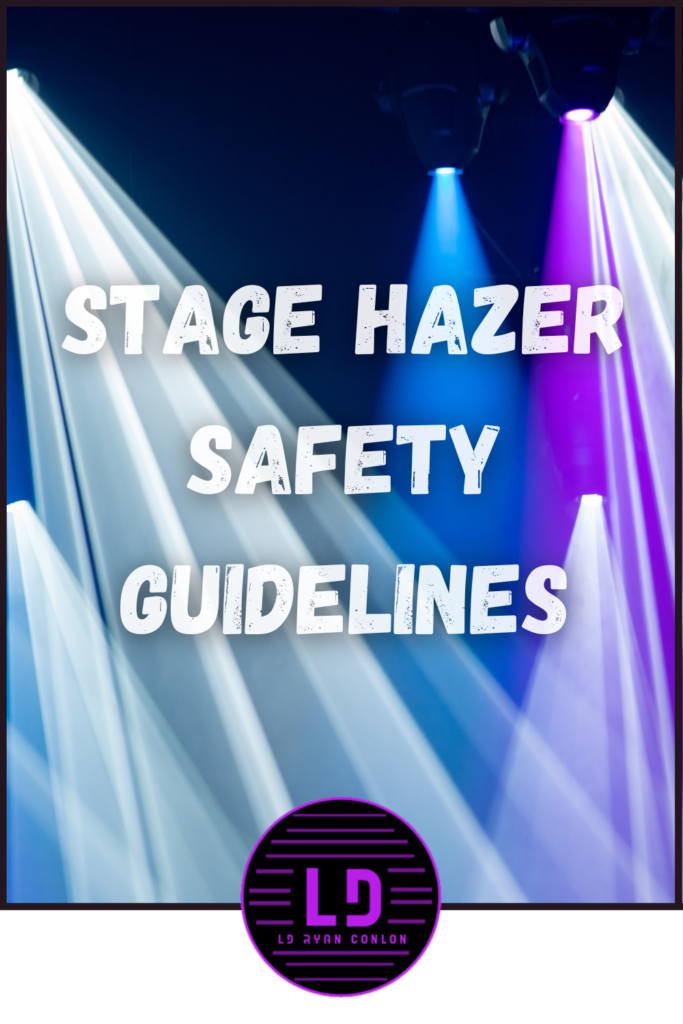

Ryan Conlon is a highly experienced Corporate Freelance Lighting Designer with two decades of dedicated work in the entertainment industry. With a passion for creating captivating lighting experiences, Ryan has contributed his expertise to numerous corporate meetings, stage productions, concerts, and events throughout his career.

